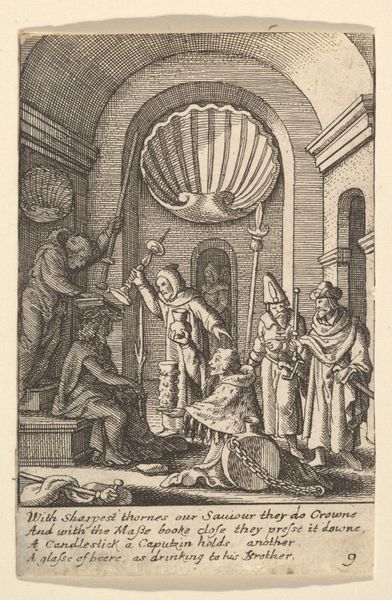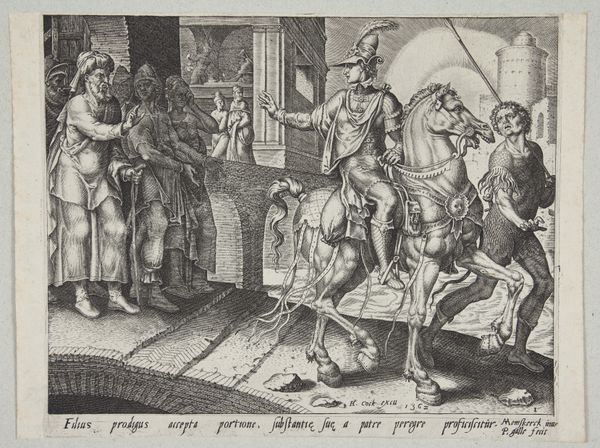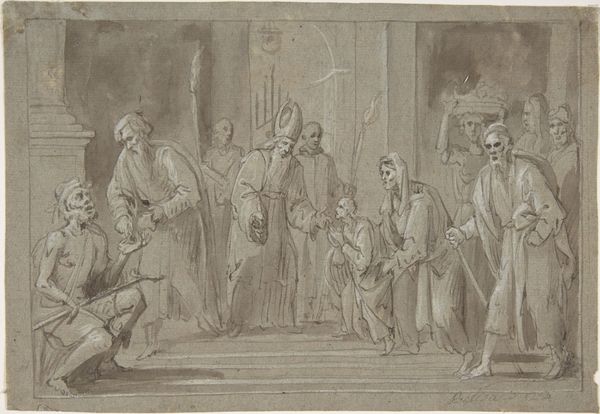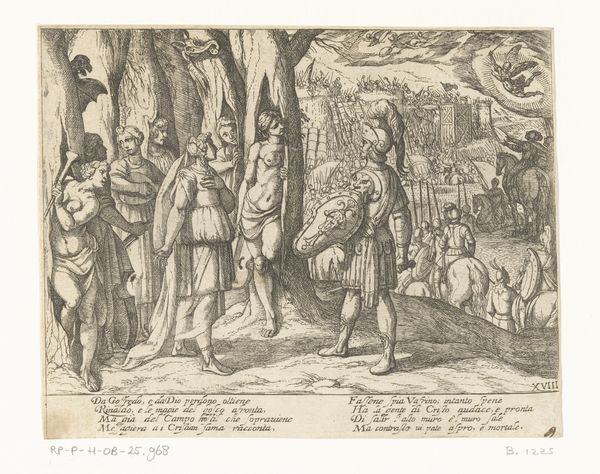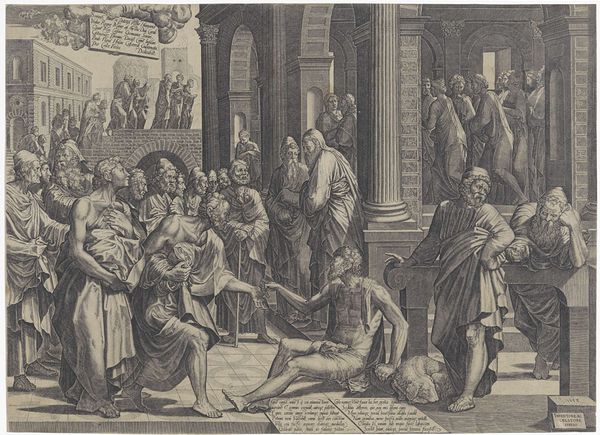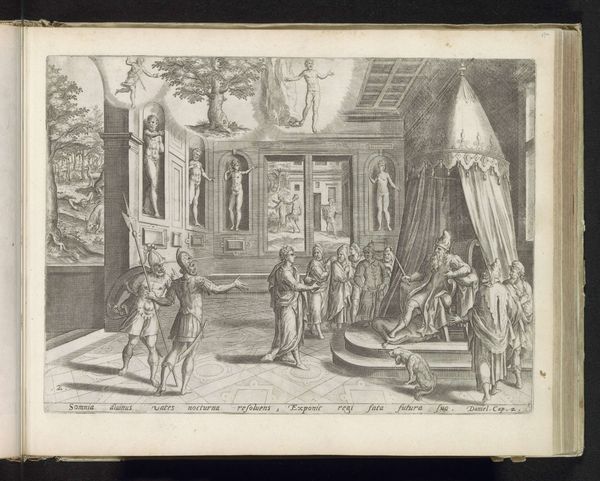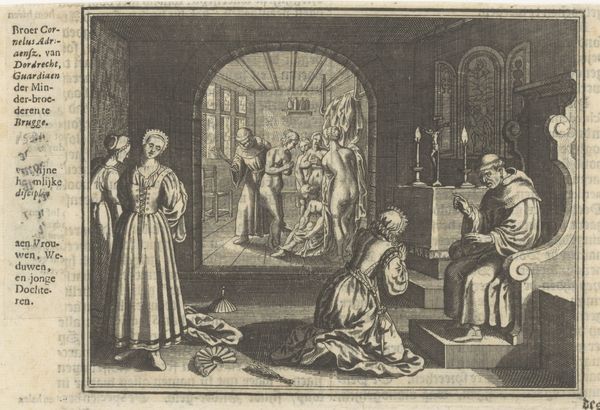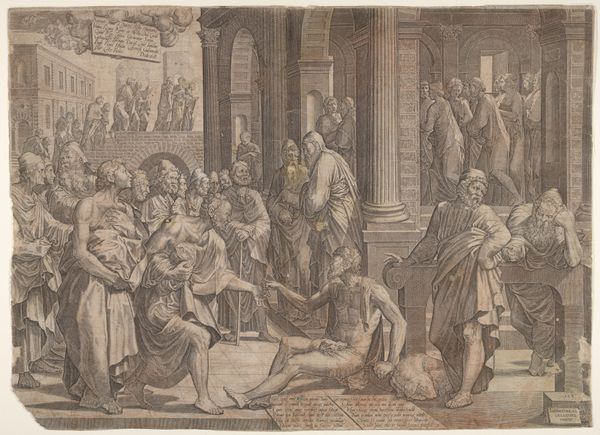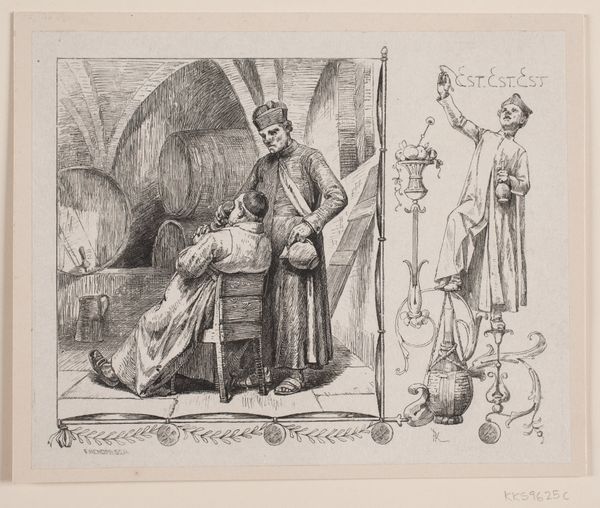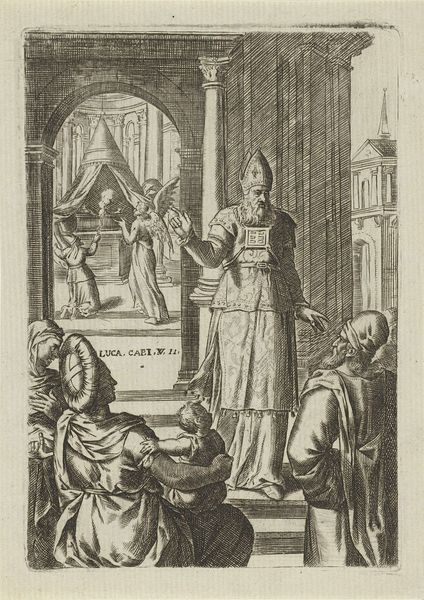
drawing, print, ink, engraving
#
portrait
#
drawing
# print
#
figuration
#
ink
#
line
#
islamic-art
#
history-painting
#
engraving
Dimensions: 75 mm (height) x 117 mm (width) (bladmaal)
Curator: This engraving, entitled "Sultan på en trone," or "Sultan on a Throne," was likely created sometime between 1600 and 1700 by an anonymous artist. It resides here at the SMK, Statens Museum for Kunst. Editor: The density of the line work is immediately striking; the effect is a shadowy scene that feels both intimate and powerful. The overall effect makes me think about hierarchical structures. Curator: Engravings such as this one were significant cultural documents. They reflect early modern European perceptions and interpretations of the Ottoman Empire. Consider the labor invested not only by the engraver but also those responsible for gathering the source materials, quite possibly through commerce, travel, or diplomacy. The proliferation of printed images allowed for standardized portrayals, whether accurate or rife with stereotype, to reach broader audiences and solidify perceptions. Editor: Note how the throne’s elevated position emphasizes the sultan’s power; the rigid lines contribute to this impression, which contrasts with the patterned surface of the cloth behind the throne. These patterns, with their swirls and detailed textures, demonstrate visual complexity. Curator: That patterning speaks to the trade routes between Europe and the Ottoman Empire during that time; many of these materials were very rare. Beyond pure commerce, they became signifiers of status back in Europe, and could even reflect changing fashion trends amongst the elite. The Sultan becomes associated with this power and status, a product of this increased global connectivity and consumption. Editor: The composition cleverly employs contrasting textures: the detailed ornamentation against relatively blank space creates an impression of volume and depth; consider how the varying depths create this overall visual drama, really emphasizing key components of this visual story. Curator: In observing "Sultan on a Throne," we find that the material process—the printmaking—allowed the diffusion of power dynamics through commodified representation. It allows for us to understand cultural exchange between early modern Europe and the Ottoman Empire in all of its visual complexities. Editor: Indeed. I'm struck by how it’s an exercise in structured observation of contrasting forms and materials—one reflecting both the grandeur of power and of trade.
Comments
No comments
Be the first to comment and join the conversation on the ultimate creative platform.

